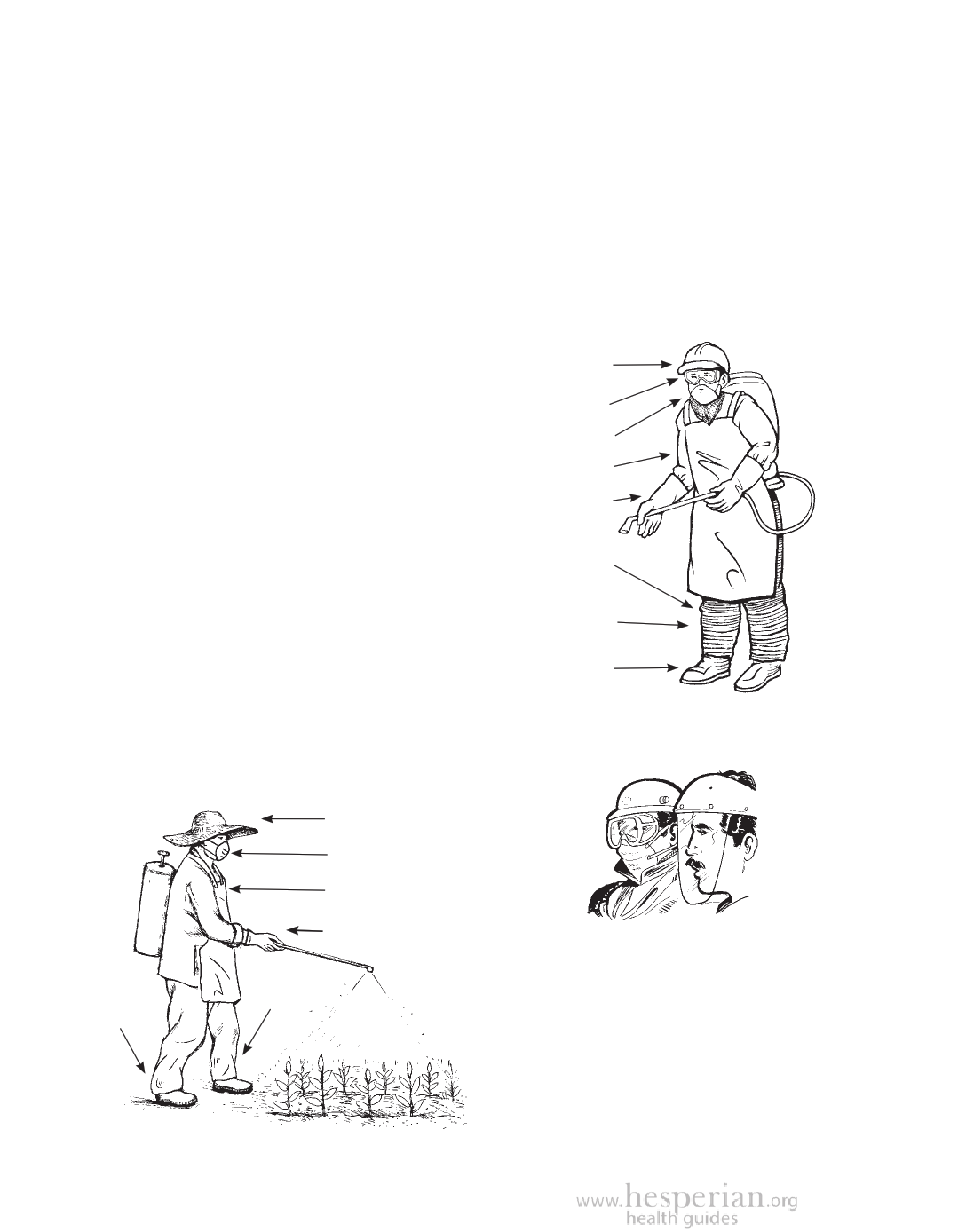
548 Appendix a: Safety and Emergencies
Protective Clothing and Equipment
Every person should wear protective clothing, also called personal protective
equipment, when working with or being exposed to harmful materials. It is
the responsibility of employers to provide protective equipment for workers.
Workers should demand that employers respect their rights to health and safety
by providing protective equipment and maintaining it in good condition.
In order to protect people,
protective clothing must fit and must
be well-maintained. It is said that in
poor countries there are 3 kinds of
protective equipment: too big, too small,
and torn. If you do not have protective
clothing and equipment, you can
protect yourself by wearing a rain suit,
or by making protective clothing out of
plastic bags. Cut holes for your head
and arms and put other bags on your
arms and legs, and hands and feet.
This picture shows all of the kinds
of protection equipment needed to
protect against most harmful materials.
Not all jobs or materials demand all
of this equipment, and some kinds of
work require specialized clothes and
equipment.
hard hat
(safety helmet)
safety glasses
or goggles
dust mask
long-sleeved shirt
gloves
long pants
(women too!)
keep pant legs
outside boots
boots or closed
shoes, with socks
Farmworkers exposed to pesticides should wear:
closed
shoes
long
pants
hat with a brim to
protect against sun
a respirator or face mask
a thick canvas, plastic,
or rubber apron
gloves.
If no respirator or face mask is
available, people often use a
bandana or scarf. But pesticides
will stick to a wet or sweaty scarf
or bandana. This makes it more
dangerous to use these than to have
no mouth protection at all. If you
do use a scarf or bandana, rinse and
dry it often, and know that it does
not offer much protection.
A Community Guide to Environmental Health 2012